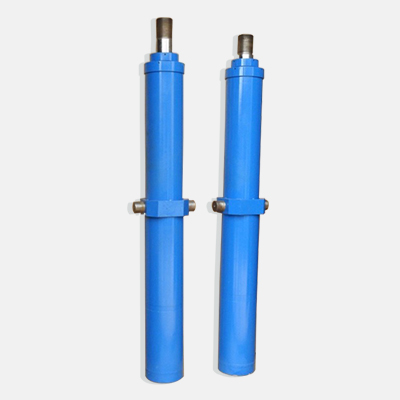Hydraulic Cylinders (Multi Stage)
- home
- Hydraulic Cylinders (Multi Stage)
Hydraulic Cylinders (Multi Stage)
Elevating Construction Operations with Telescopic Cylinders
Dynamic Hydrofab specializes in the production of a wide range of Telescopic Cylinders, which are widely utilized in the construction sector for several processes. They are carefully designed, and several quality tests are carried out to ensure that the product complies with the quality requirements of the consumers. The product is extremely durable, produced using cutting-edge technology, and manufactured on cutting-edge machinery.
Telescopic Cylinders Explained
Telescopic cylinders are hydraulic cylinders that have been carefully developed to deliver an extraordinarily long output travel from a very compact retracted length. Depending on the number of stages, the collapsed length of a telescopic cylinder is typically 20% to 40% of the fully extended length.
• When a traditional single-stage rod-style actuator does not fit in an application to create the desired output stroke, this feature comes in handy for machine design engineers.
• Telescopic Cylinders are typically powered by hydraulics, however, certain unique low-duty types are powered by compressed air.
• Telescopic cylinders are classified as single-stage and multi-stage. Dumping aboard a dump truck is a popular application for telescopic cylinders on a building site. To completely discharge the load of gravel, the dump body must be elevated to an angle of around 60o. It is quite difficult to achieve this lengthy journey with a typical hydraulic cylinder since the collapsed length of a single-stage rod cylinder is around 110% of its output stroke.
Technical and Design Terminology
An item folded (top) and stretched (bottom), demonstrating the telescopic principle. Telescopic cylinders are created at Dynamic Hydrofab by nesting a succession of steel tubes of progressively decreasing diameters within each other. The main or barrel sleeve has the biggest diameter. The stages are the smaller inner sleeves. The smallest stage is sometimes referred to as the plunger. Pivot mounts welded to the end or outer body of the barrel as well as the end of the plunger are often used to mount the cylinders in equipment.
Telescopic cylinders with up to six steps are possible. Six stages appear to be a reasonable design limit since the number of steps increases the difficulty of stability difficulties. Telescopic cylinders must be carefully designed since they are subjected to strong side forces, particularly at maximum extension. Moment stresses on the bearing surfaces between stages are created by the weight of the steel bodies and the hydraulic fluid stored within the actuator. Together with the weight being pushed, these pressures threaten to bind or even buckle the telescopic assembly. Sufficient bearing surfaces should only be utilized in machinery as a force and travel device. Side forces and moment loads must be kept to a minimum. Telescopic cylinders should never be utilized to support a structural component.
The maximum hydraulic pressure of telescopic cylinders is frequently limited to 2000-3000 psi. Because of the outward pressures created by internal hydraulic pressure, the steel sleeve portions tend to expand. If you apply too much pressure, the nested sleeves will expand outward, bind the mechanism, and cease moving. A permanent distortion of the outside diameter of a sleeve might develop, destroying a telescopic actuator. As a result, shock pressures must be avoided in a hydraulic system utilizing telescopic cylinders. To absorb pressure spikes, such hydraulic systems are frequently supplied with shock-absorbing components such as hydraulic accumulators.
Connect with Dynamic Hydrofab Today!
For your next project's hydraulic needs, partner with Dynamic Hydrofab, renowned as one of the best Telescopic Cylinders Suppliers. Elevate your construction operations with our durable, meticulously tested telescopic cylinders. Experience unmatched quality and reliability for seamless machinery performance. Contact us today!











